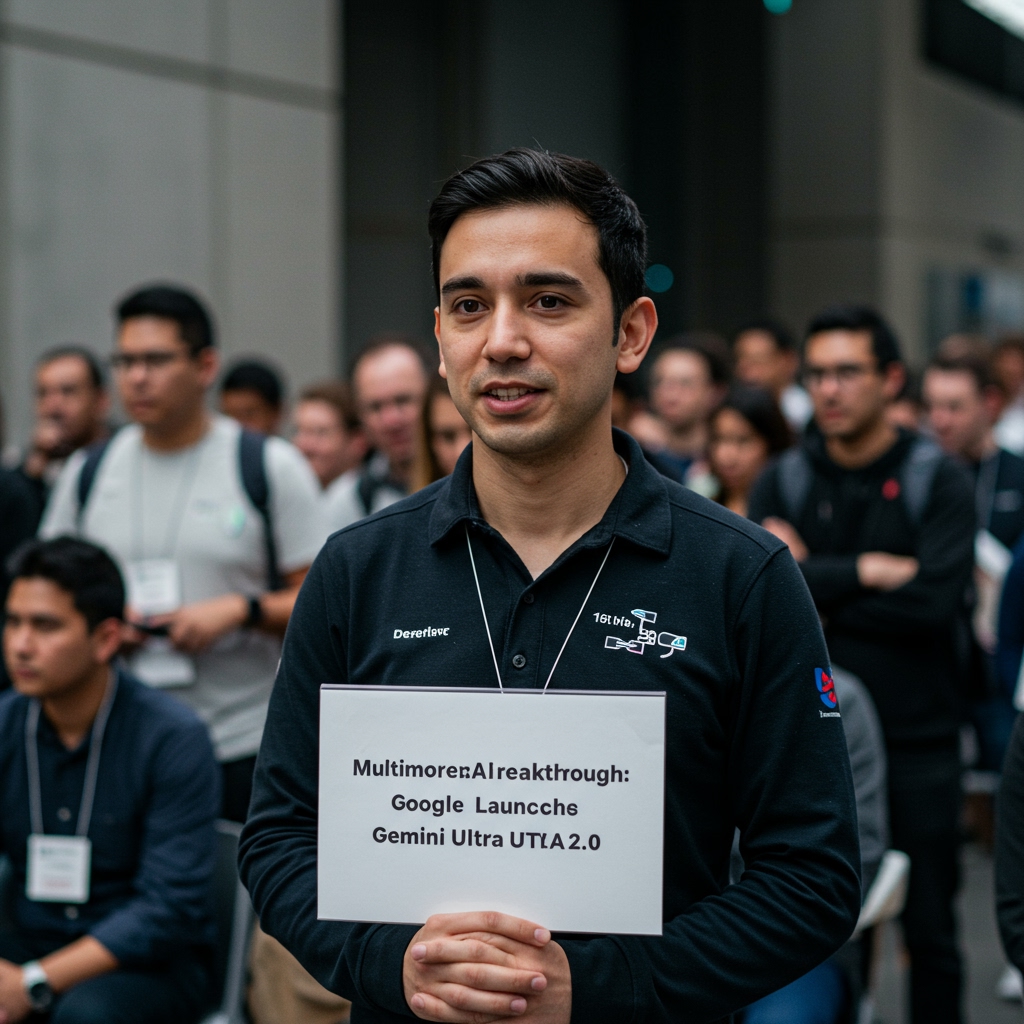Google Introduces Gemini Ultra 2.0 with Major Multimodal Reasoning Claims
MOUNTAIN VIEW, CA – Google today announced the next generation of its flagship artificial intelligence model, Gemini Ultra 2.0, during the keynote address at its annual I/O 2025 developer conference held on Friday. The reveal positions Gemini Ultra 2.0 as a significant step forward in the company’s quest for advanced AI capabilities, particularly in the domain of multimodal understanding and complex reasoning.
According to statements made by Google executives at the event, Gemini Ultra 2.0 represents a breakthrough in how AI models can process and integrate information from various types of data simultaneously. The company claims the new large language model achieves substantial advancements in multimodal understanding and complex reasoning tasks, setting new performance standards that reportedly surpass previous internal and external benchmarks.
A Deeper Dive into Multimodal Capabilities
The concept of multimodal reasoning is central to the advancements touted with Gemini Ultra 2.0. Unlike models primarily focused on text, a multimodal model is designed to interpret and generate content across multiple data types, including text, images, and video. Google demonstrated several key features highlighting this integrated capability.
During the presentations, examples were shown illustrating Gemini Ultra 2.0’s ability to analyze complex visual information within images and videos and combine it with textual instructions or queries. This allows the model to perform tasks such as describing detailed scenes from a video clip, answering questions about the content of an image that require inferential reasoning, or even generating new content (like text descriptions or code) based on a combination of visual and textual inputs.
The company emphasized that these capabilities are not merely about processing different data types in isolation but about reasoning across them. For instance, the model could potentially watch a video tutorial and generate a step-by-step text guide, or analyze a technical diagram (image) alongside a text-based problem description to propose a solution.
Efficiency and Underlying Infrastructure
Performance and efficiency are critical factors for deploying large, sophisticated AI models at scale. Google CEO Sundar Pichai specifically highlighted the efficiency gains achieved with Gemini Ultra 2.0. These improvements are reportedly powered by Google’s latest custom silicon, indicating a continued strategic focus on developing specialized hardware optimized for AI workloads.
The reliance on custom silicon, such as Google’s Tensor Processing Units (TPUs), underscores the immense computational requirements of training and running state-of-the-art models like Gemini Ultra 2.0. Optimizing these processes leads to faster inference times, lower operational costs, and potentially more sustainable AI development, aspects that are increasingly important as AI applications become more widespread.
Pichai’s emphasis on the role of hardware suggests that the performance lift in Gemini Ultra 2.0 is not solely an algorithmic achievement but also a result of co-optimization between the model architecture and the underlying computational infrastructure built by Google.
Context in a Shifting AI Landscape
The announcement of Gemini Ultra 2.0 comes at a pivotal moment for the artificial intelligence field. Recent months have seen intense global discussions around AI capabilities, their potential societal impact, and the urgent need for regulatory frameworks.
Major AI model releases like Gemini Ultra 2.0 invariably contribute to these discussions, raising questions about safety, ethics, bias, transparency, and the pace of technological advancement. As AI systems become more powerful and capable of handling complex, real-world data (like multimodal inputs), the stakes involved in ensuring responsible development and deployment increase significantly.
Governments and international bodies are actively exploring and drafting regulations to govern AI development and deployment. The unveiling of a model claiming breakthroughs in core AI capabilities like complex reasoning provides concrete examples of the technology that policymakers are attempting to understand and regulate.
Furthermore, the release occurs within a highly competitive landscape, where major technology companies are vying for leadership in AI research and application. Advancements in foundational models like Gemini Ultra are seen as key to unlocking new products, services, and developer opportunities.
Looking Ahead
While the I/O keynote provided a glimpse into the claimed capabilities of Gemini Ultra 2.0, the full extent of its performance improvements and the specific ways developers will be able to leverage its multimodal reasoning power remain details that will likely unfold in the coming months. Google’s developer conferences typically serve as a platform to introduce new tools, APIs, and access pathways for its AI technologies, enabling external developers to build applications on top of Google’s infrastructure.
The focus on enhanced multimodal reasoning suggests potential applications ranging from more sophisticated content creation tools and improved accessibility features to advanced robotics and complex data analysis requiring the interpretation of diverse information streams. The combination of claimed performance boosts and underlying hardware efficiency points towards Google’s ambition to make these advanced capabilities accessible and practical for developers and end-users alike.
The launch of Gemini Ultra 2.0 at Google I/O 2025 thus marks a significant development reported by the company, aiming to push the boundaries of multimodal AI and reaffirming Google’s commitment to leading the field through both algorithmic innovation and dedicated hardware development, all within the backdrop of an increasingly complex global conversation surrounding the future of artificial intelligence.





